2019_programme: TARGET ECHO STRENGTH-MEASUREMENTS AND MODELLING
- Session: 21. Target Echo Strength-Measurements and Modelling
Organiser(s): Williams Duncan, Nunn David, Nijhof Marten
- Lecture: TARGET ECHO STRENGTH-MEASUREMENTS AND MODELLING
Paper ID: 1023
Author(s): Beadle Joseph. G, Sambles J. Roy, Hibbins Alastair. P.
Presenter: Beadle Joseph
Presentation type: oral
Abstract: Ultrasonic acoustic waves supported on a thin acrylic plate having a monograting on one surface are explored when the plate is surrounded by water. Scholte waves [1] are expected on the solid-fluid interface and in the case of thin plates they show strong dispersion [2]. The addition of surface structure and periodicity in the system leads to interesting characteristics in the resulting surface mode dispersion. To experimentally characterise this dispersion an ultrasonic source is placed on the flat side of the plate and by diffractive coupling of a wide band acoustic pulse through a hole surface modes on the structured side are excited. A detector placed very close (in the near field) to the grating surface is then scanned along the surface in a direction orthogonal to the grating grooves. This produces a high-resolution line scan of the acoustic pulse propagation. This data is first Fourier analysed in time to give for each frequency a line map of amplitude and phase and from this a spatial fourier transform yields the dispersion along that direction. This data is then compared with the predictions from a finite element model and the character of the various modes which exist beyond the water sound line explored. \n\nReferences \n\n[1] J. G. Scholte, "The range and existence of Rayleigh and Stoneley waves", Mon. Not. Roy. Astron. Soc. Geophys. Suppl., vol. 5, pp. 120-126, (1947).\n\n[2] V. Aubert, et. al “A simple acoustofluidic chip for microscale manipulation using evanescent Scholte waves” Lab Chip 16, 2532 (2016).\n
- Corresponding author: Mr Beadle Joseph
Affiliation: University of Exeter
Country: United Kingdom
e-mail:
